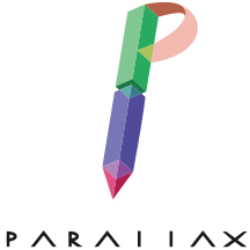Gabbie Hanna, Adultolescence, $16.99, ISBN 978-5011-7832-0
Adultolescence by Gabbie Hanna is a playful and childish book of poetry, paired with Hanna’s own simple and beautiful artwork. It explores the mentality and struggles of the new adult generation, as well as the influence of social media on mental health and real life relationships.
The book depicts grueling subjects such as breakups, the struggle to find oneself, and even depression and suicide. However, despite the subjects, Adultolescence remains sarcastic and immature. The childishness of Hanna’s poetry has its charm, and follows the newly developed “Twitter-speak” form of poetry which derives its language and audience from the short, cynical style of the new social-media-crazed population. However, this style does not serve the subject matter in an effective way.
Some of the poems follow a rhyme scheme, yet are too short to fully carry it out. The poem HIDE (15) for example, follows an AA rhyme scheme, and explores the effects of hiding depression and other mental health issues. But this poem is too short to have an important or influential message of any kind. It seems that these subjects, which are common topics among teens and young adults today, are only there for the reader to relate to. In addition to falling short in the linguistic department, the shorter poems deal with heavier topics like mental health issues, even addressing death and the desire to die, or wanting someone else to die; yet the poems seem to trivialize these issues. For example, POUT examines these issues in an immature way, saying, “life sucks. be grateful, you woke up this morning. that’s the worst part.” (8-9) This type of language is often used by teenagers today; they joke about these feelings in conversation in order to mask them, using humor as a coping mechanism, which is not often a positive message for someone to be promoting. These short anecdotes are paralleled by longer poems and anecdotes which seem repetitive and dry, devoid of the sarcasm and wit that is present, albeit misused, in the shorter poems.
The art is interactive, often incorporating the poem into the drawing in one way or another. At times the art pairs well with the pieces, but ultimately does not help readers obtain a meaningful takeaway. Hanna is clearly artistically inclined, as her drawings are impressively detailed, while still sticking to a line art style. The realism of the drawings may take readers by surprise, as the people in them are easily recognisable, and often appear with Gabbie in her YouTube videos. All of these positive traits, however, do not make up for the writing, some of which is worked into the drawings in rather disappointing ways. One example of this is a poem titled “K,” which is an blank page, except for a text bubble with the letter “K” inside and a read receipt underneath.
Adultolescence follows a common thread, which seems to have stemmed from the Milk and Honey phenomenon, and follows the same pattern of good artwork paired with–at best–mediocre writing. Milk and Honey by Rupi Kaur was one of the highest grossing poetry books of 2017, and was Number Two on Amazon’s Best Seller list. It is widely loved and cited as an aesthetically pleasing and relatable work by many teen readers. That being said, Milk and Honey shows a pop-culture side of poetry, rather than the traditional style which uses beautiful language, and images found in the work of poets like Sylvia Plath and Emily Dickinson. This new and vulgar style is now simply being accepted by readers without much thought, due to its easily interpreted, relatable content.
Adultolescence–along with Milk and Honey–represents a new idea of “money grab” poetry, which stems from social media influencers, and the new Internet-focused generation. These influencers write books in the anecdotal style of Twitter and other word-space-limited social media platforms, and then claim them to be artistic and poetic, when really it is a way for an already well known celebrity to make even more money. People like Gabbie Hanna, who could be considered second tier influencers, and have a smaller audience than other big-name YouTubers, often share their financial situation with their fans and may have a lower income than larger influencers. This somewhat justifies the “easy money” of writing and selling books, as it pulls in readers from a smaller fan base, and expands the writer’s brand.
However, this does not justify the claim of “art.” Adultolescence does not represent what poetry really is to most published poets. The claim of poetry and art should be reserved for beautiful, intelligent, and playful works, and should not be applied to collections of on-trend, relatable, and sarcastic content, which sells more copies than authentic art, due to the popularity of the writer rather than the quality of the work.
By Delany Burk
